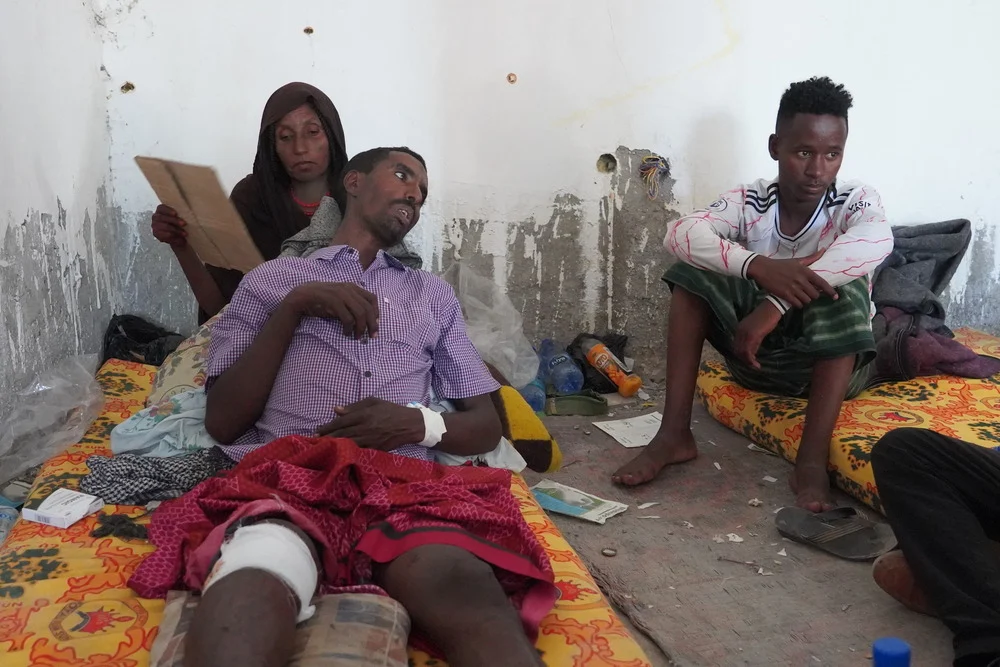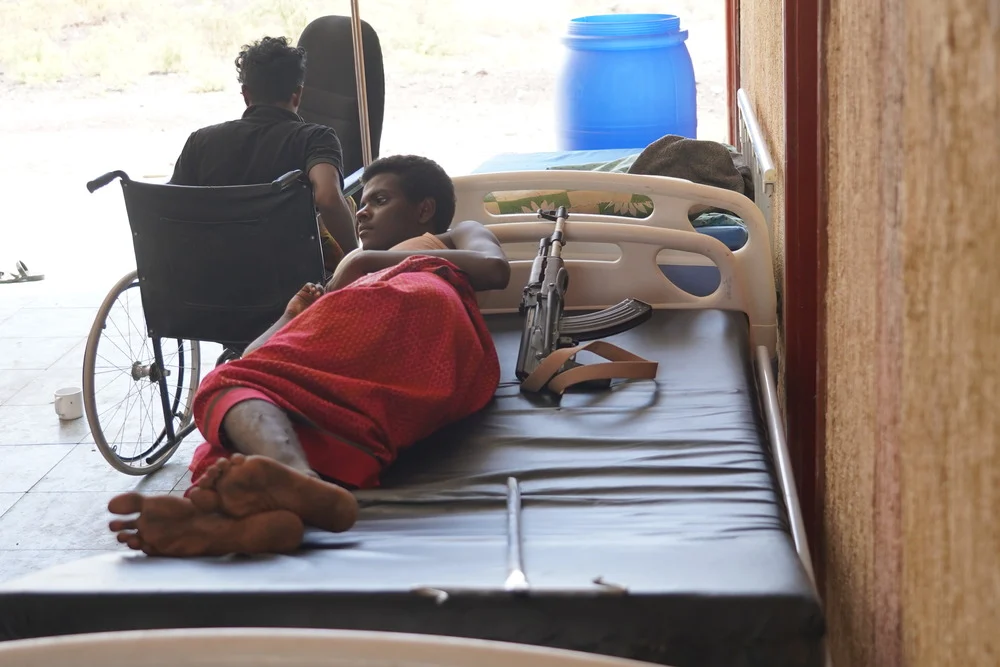
There is only one referral hospital in Ethiopia’s north-eastern Afar region, and its doctors are overwhelmed. Patients have been arriving with bullet wounds and blast injuries in recent weeks. A lack of beds means many end up on bare mattresses on the ground.
“We don’t know who died and who stayed [behind],” said Mouhedin Ahmed, a patient at Dubti General Hospital. He was hit by a mortar while fleeing an attack on his village by rebels from the Tigray region, who launched an offensive in Afar in mid-January.
Ethiopia’s government declared a unilateral truce with the Tigrayan forces in early April, promising to facilitate aid into Tigray; a months-long government blockade has left millions of people there bereft of health supplies and facing extreme food shortages.
Yet efforts to end the war and ramp up humanitarian aid will be complicated by the situation in Afar, where militias that fought alongside the federal government remain locked in conflict with neighbouring Tigray.
Local officials in Afar, which is now the main conflict front in Ethiopia’s ever-shifting 17-month civil war, say Tigrayan forces are currently occupying half a dozen counties in their region. The officials say 300,000 people have been uprooted since January.
On March 28, Tigrayan rebels confirmed that they were observing a “temporary cessation of hostilities”, to give the truce a chance. Yet Tigray spokesman Kindeya Gebrehiwot told The New Humanitarian on 30 March that its forces remain in “some parts” of Afar.
If Tigrayan rebels maintain their positions, Afar leaders and communities may hesitate to allow the passage of aid convoys into Tigray. Afar wields power because the only overland corridor made available to Tigray-bound convoys passes through the region.
Further fighting could also constrain aid operations within Afar, which have already been suspended following attacks on food convoys by unknown assailants. Malnutrition cases are now rising and supplies are running out at hospitals.
The conflict has impacted other groups in Afar too. Eritrean refugees in the region were forced to flee attacks, while local Tigrayans have been rounded up in detention centres or have fled to Tigray amid reports of massacres.
Both sides blame each-other for starting the conflict. The Tigray People’s Liberation Front (TPLF), which rules Tigray and leads the rebellion, says Afar forces and an Eritrean-supported militia made incursions into their region prior to the offensive.
Afar residents told The New Humanitarian that Tigray’s forces invaded without provocation, encircling towns in northern parts of the region and firing rockets that destroyed homes and killed civilians – especially the elderly unable to flee.
“The Tigrayans attacked us a lot, they killed many men, youth, even teenagers,” 30-year-old Fatouma Ali told The New Humanitarian on a mid-March visit to Afar. Ali said she managed to escape the town of Abala, which is next to the Tigray border.
The Afar conflict represents the latest twist in a wider war that began in November 2020, following tension between Addis Ababa and the TPLF. The Tigrayan party was the main force in Ethiopian national politics until Prime Minister Abiy Ahmed took office in 2018.
After the government’s initial military campaign failed, it placed Tigray under a siege. A mid-2021 offensive by the TPLF-aligned Tigray Defence Forces (TDF) then sought to break the blockade by pushing into neighbouring regions, including Afar.
The rebels eventually retreated late last year under a hail of government drone strikes. But as fighting between the TDF and Addis Ababa subsided, friction between Afar and Tigray spiralled into a full-scale conflict.
Shelters made from strips of plastic sheeting do little to protect occupants from some of the hottest temperatures on earth.
Few were ready when the TDF arrived, said 18-year-old Abdallah Umar from Afar’s Berhale district. “They attacked us early in the morning; some people were still sleeping,” he said. “There were many people in the village; some were killed and others escaped”.
Those displaced embarked on perilous journeys. Some died of thirst in Afar’s punishing heat, while others suffered fatal falls in rock-strewn mountains. Scattered families ended up in different towns. Many have not heard from each other since.
Displacement camps offer safety but little comfort. At a site in Afdera town – just south of the main conflict front, shelters made from strips of plastic sheeting do little to protect occupants from some of the hottest temperatures on earth.
Food at displacement sites is also in short supply. At another camp in the town of Silsa, some residents ate only flatbread for a recent evening meal. Flour was shared around by generous neighbours – the first responders in so many crises.
The response in Afar is also constrained by a lack of funding and the limited presence of aid organisations.
The UN’s emergency aid coordination body (OCHA) says relief supplies have been distributed to some of those in need in Afar. But it says its work in the region is hampered by insecurity and difficult mountain terrain.
- The New Humanitarian report











